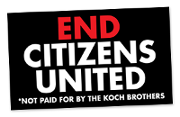Biblio
Filters: Term is Business [Clear All Filters]
(1997). A higher standard of leadership: lessons from the life of Gandhi.
"As a leader...you bear a great responsibility. If you set the direction, analysis and support will appear throughout the organization even if you are wrong. Those who are not in positions of power will find it difficult to disagree—to be truthful—because they fear for their careers and their futures." (p. 113)
(1997). How to Be Safe in an Unsafe World : A Guide to Inner Peace and Outer Security.
"If your intention is to creatively resolve everyday clashes that occur at home, on the street, or in the workplace, a willingness to understand the other side is essential. Remember, your goal in many situations is not to win arguments, not to prove your point; your goal is to be and feel safe." (p. 78)
(1994). How to Keep People From Pushing Your Buttons.
"Sometimes we get terribly bent out of shape when someone treats us insensitively, manipulates us, takes advantage, or is downright unfair. Therefore, we are not suggesting that if you are treated unfairly, you roll over and say 'Hit me again, baby. Beat me to a pulp' or 'Well—ha, ha—nobody's perfect. Maybe they didn't mean it.' You can still decide to do everything possible to redress injustices and unfairness, whether they be personal or social, without overrreacting and becoming part of the problem." (p. 72)
(1991). How to Lead Work Teams: Facilitation Skills.
"Leaders will do well to think of a team as a collection of diverse individuals, each with his or her own unique character and potential for contribution to the group. Being expected to conform and to subjugate individual needs and desires for the common good is degrading to team members. The fact is that some people are more comfortable as part of a group than others. Some more independent members may feel constrained and ill at ease working in a team. Others, because of their race, sex, age, religion, or culture, may not have much in common with other members and yet feel pressured to get along and conform. An effective leader is sensitive to the need to preserve individual dignity, to capitalize on differences, and to not try to achieve conformity."
(Submitted). How to put more time in your life.
(2006). How to Succeed in Business Without a Penis: Secrets and Strategies for the Working Woman.
"Dr. Provinc, a professor of neurobiology, psychology, and the anthropology of laughter at the University of Maryland Baltimore County, would most likely agree with me. As he has said already:"
Fashions on laughter change, but one thing that stays the same is you can't laugh at people in power. Laugh at your boss, and you may be the recipient of that practical joke known as the little pink slip.
(1981). How to Win Friends and Influence People.
"If some people are so hungry for a feeling of importance that they actually go insane to get it, imagine what miracle you and I can achieve by giving people honest appreciation this side of insanity." (p. 58)
(2003). How to work for an idiot: survive & thrive– without killing your boss.
"The plan I suggest in this chapter is the old 'false identity' ploy. If you can't beat 'em, join 'em. Or make it appear as if you're joining 'em. Sometimes it's just no use fighting the system. Burn your personal fuel cells on things you have some control over and enjoy. If you're trapped in a culture of idiots with no possibility for improvement in your lifetime, you might as well blend in. Why burn yourself out?" (p. 32)
(1952). How to Work with Groups.
"Problems arise in groups when the personal touch goes out. When groups become so large that they are mechanical rather than personal the human being and his needs become secondary. Under such circumstances people are likely to feel frustrated, unwanted, and unimportant. They see no way to take hold, to be a real part of the group. They strike out and fight back against a system which does violence to their deep need to be important." (p. 139)
(1999). How To Work With Just About Anyone.
(1989). How you really get hired: The inside story from a college recruiter.
"I am not a soapbox person, but I have seen so many employees mourn the loss of a job with the same feelings experienced with the loss of a loved one—guilt, frustration, anger, and finally acceptance. Americans often make the mistake of transposing who they are into what they do. You are many things: friend, spouse, neighbor, church member, card carrying ACLU member, co-worker, parent, advisor, and...Marketing Manager. The essence of you will never be reflected in your job title." (p. 188)
(1998). The Human Equation: Building Profits by Putting People First.
Pfeffer reviews studies that "make a business case for managing people right". Among the factors that cause trouble for companies trying to implement such change, are: "Demands for accountability and reproducibility in results and decisions that destroy the benefits of expertise, which is inevitably dependent on tacit knowledge." (p. 132)
(1993). Human Relations in Organizations.
"One approach in dealing with the problems of individual versus organization in the bureaucratic model is to develop an impersonal approach to human relations. Managers become more impersonal in their dealings with employees and attempt to ignore individual differences and focus on the task accomplishments. This leads to individual dissatisfaction because the employees believe that the organization is impersonal and is using them like a machine." (p. 75)
(2003). I Am Never Lonely: A brief history of employee personality testing.
"This first boom in personality testing reached its apogee with Henry C. Link's Employment Psychology, in 1919, in which he proclaimed:
'The ideal employment method is undoubtedly an immense machine which would receive applicants of all kinds at one end, automatically sort, interview, and record them, and finally turn them out at the other end nicely labeled with the job which they are to do.'
(2003). I Don't Know What I Want, but I Know It's Not This : A Step-by-Step Guide to Finding Gratifying Work.
"Being bored or plateaued does not mean that you aren't working hard or that you don't have enough work to do. Being busy and dealing with the excessive stimulation that the workplace provides us with today have little to do with being bored. The combination of the two merely leads to a greater level of burnout." (p. 123)
(1984). Iacocca: An Autobiography.
"Everybody has lost good people who have simply been in the wrong job and who might have found more satisfaction as well as greater success if they could have been moved to another area instead of being fired." (p. 49)
(1995). Idiot Letters.
(1999). If work makes people with mental illness sick, what do unemployment, poverty, and social isolation cause?.
Psychiatric Rehabilitation Journal. 23(2), Abstract
"In fact, the change from the role of patient or client to a new role as worker in society is fragile at best. The journey to employment requires a more sensitive approach from all involved individuals (the worker, the professionals, family, and friends) to the extent that everyone can successfully leverage the potential and ability of the worker with an appreciation of the limitations that are part of the illness."
(1986). Images of Organization.
"History may well judge that Taylor came before his time. His principles of scientific management make superb sense for organizing production when robots rather than human beings are the main productive force, when organizations can truly become machines." (p. 33)
(1998). Images of Organization: The Executive Edition.
"The groupthink phenomenon has been reproduced in thousands of decision-making situations in organizations of all kinds. It may seem overly dramatic to describe the phenomenon as reflecting a kind of psychic prison. Many people would prefer to describe it through the culture metaphor, seeing the pathologies described in all the above examples as the product of particular cultural beliefs and norms. But there is great merit in recognizing the prison-like qualities of culture." (p. 186)
(2000). Imagine : what America could be in the 21st century : visions of a better future from leading American thinkers.
"People want it all. They feel, quite understandably, that is is their birthright. They want the fast life of converging technology, global roaming, rising opportunities, adrenaline-pumping challenges, and life at Web speed—and they want to spend time with their families and friends, meditate, keep fit, relax, and play. It's not about work/life balance; it's about the complete integration of work and life, a holistic, seamless fit between these two and every other aspect of life. The new-story leader encourages employees to engage their creative juices while they are walking along a beach, or to shop for groceries online while they are at work and not be self-conscious—indeed, to be unaware of the difference. Life is whole, not seperated into two solitudes called 'work' and 'life'. " (p. 129)
(C)2014 CC-BY-NC 3.0, workcreatively.org











 ]
]